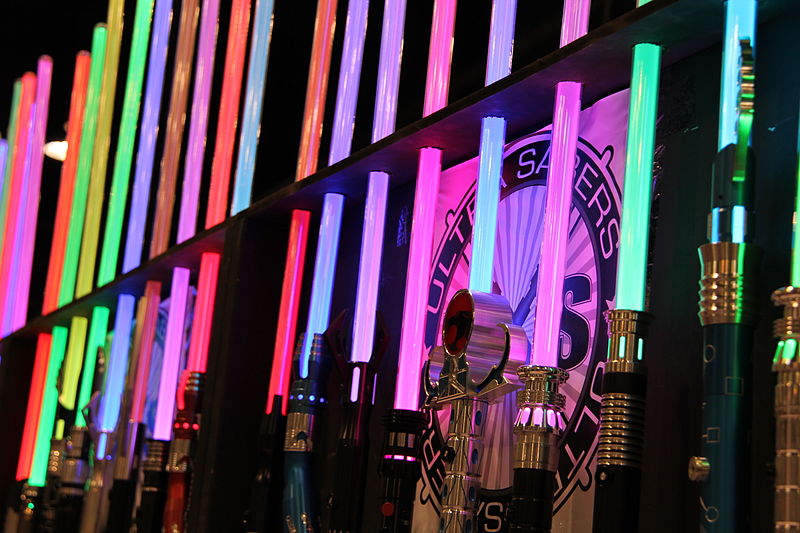May the 4th be with you
Whether you’re a Star Wars superfan or find yourself lost when the conversation turns to discussions of the feasibility of the Death Star, you can probably identify the epic space series’ iconic lightsaber. The lightsaber has become one of the most recognizable images in popular culture, but is it purely fiction or could it be a reality?
According to the Star Wars books, lightsabers are pretty complex devices but essentially boil down to a few key elements: a power source and emitter to create light, a crystal to focus the light into a blade, a blade containment field, and a negatively charged fissure. In the Star Wars galaxy, a lightsaber creates energy, focuses it, and contains it.
But that’s fiction and those ideas are not in line with current science and technology. So how could we build a lightsaber with the tools we have today?
Many people look initially to laser technology when discussing a practical lightsaber. It’s unrealistic to say that light could be the source of the blade seeing as light has no mass (creating a pretty insufficient weapon), but lasers could be an alternative. It may seem contradictory to say that lasers could be the blade in a lightsaber when lasers are essentially light focused to a very fine point, but as Looper puts it, light is to a laser what a tree is to paper.
But before we can get too far in building our laser blade lightsaber, we encounter our first problem: the arch. Lasers don’t bend; they will go on until the make contact with something and then come to an end. Because of this, we have to take a laser blade off the table.
So let’s turn to our next alternative: plasma. Plasma is the fourth state of matter in addition to solid, liquid, and gas. Lightning, for example, is a type of plasma.
While lightning may be an unpredictable force, it is possible to harness plasma. We can see this in industrial settings where plasma torches are used to cut metals.
But the real linchpin is the question of energy storage. A lot of power means a lot of energy demand, and with a small, portable device, there needs to be some way to store this amount of energy.
For example, you’d need about 50 megawatts of power to heat the plasma to the temperature of the surface of the sun, which would allow you to slice through steel as if it were butter. But to have the lightsaber run consistently at that level without being plugged into a huge machine is nearly impossible. Even if we could combine sheets of graphene to create a supercapacitor, it still could not hold enough energy.
However, it’s not all bad news. A few years ago, researchers from MIT and Harvard accidentally created a lightsaber (sort of). In an effort to move quantum information, researchers stumbled upon the photonic molecule – a possible new state of matter. They found that could bind photons together for the very first time, forming molecules when they interact.
This is different than what we knew of photons before (e.g. our flashlight blades made as kids). In this study, when the molecules interacted, they pushed together reflected off each other, very much like the fictional lightsaber. This study is in line with Bill Nye’s hypothetical for a real-life lightsaber, where light would destructively interfere with itself at a meter or a meter and a half away from your hand.
While we may not have the technology right now for a seamless lightsaber, the future it looking pretty good for Star Wars fans.



